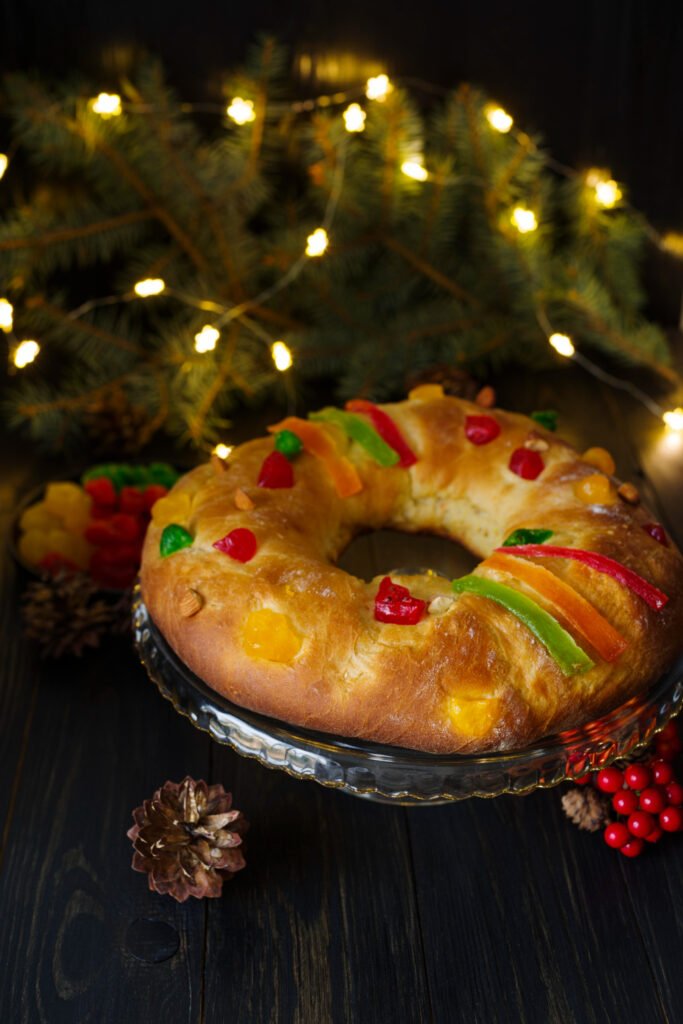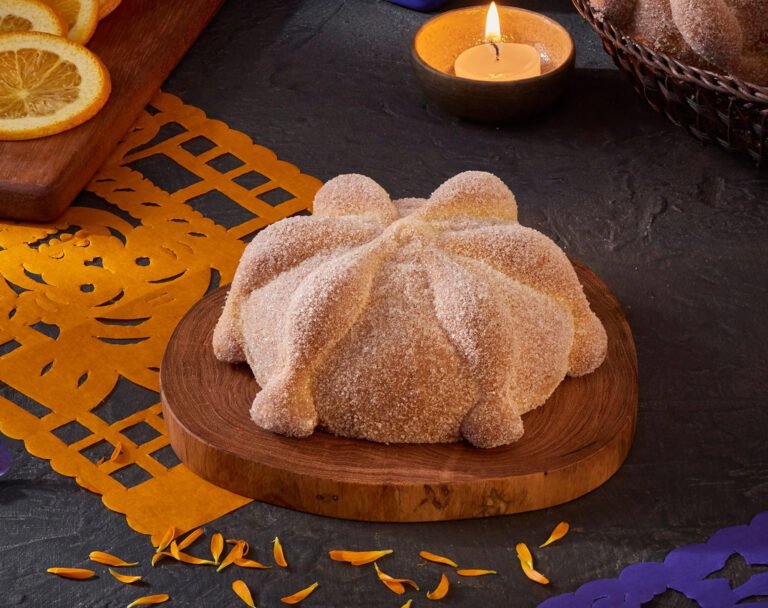Every January 6, millions of people around the world celebrate the arrival of the Three Wise Men with a delightful tradition: the rosca de Reyes. This sweet bread, circular in shape and decorated with brightly colored candied fruit, is not only a delight to the palate, but also a profound symbol of the Christian holiday of Easter. Epiphany. But where does this tasty tradition come from? In this post, we will explore the origin of the rosca de Reyes, its symbolism and how it has become one of the most beloved customs, especially in Latin America.

The Christian origin of the rosca de Reyes
The "rosca de Reyes" has its roots in the celebrations of the EpiphanyThe feast of the Magi, which commemorates the visit of the Magi to the baby Jesus in Bethlehem, according to the biblical account. This festivity, celebrated on January 6, symbolizes the revelation of Jesus as the Messiah for all peoples, represented by the Magi from different lands.
The tradition of the rosca de Reyes comes from Europe, especially from countries such as France, Spain and Italy, where the custom of making a special bread or cake for Three Kings Day already existed. These breads used to be round in shape, symbolizing the crown of the Three Kings. To make it even more festive, the bread was decorated with candied fruits of different colors, representing the precious stones that adorned the royal crown.
Influences from pre-existing traditions
Before becoming a Christian sweet, the rosca de Reyes was influenced by rituals of ancient Rome. During the festivities of SaturnaliaIn December, celebrated in honor of the god Saturn, round loaves of bread were prepared to symbolize the wheel of the year or the solar cycle. In these celebrations, a bean or a small object was usually hidden inside the loaves, and whoever found it became the "king" of the feast.
Somehow, that ancient custom of distributing luck and designating a king or queen of the feast merged with the Christian celebrations of the Epiphany, giving rise to what we know today as the rosca de Reyes.
The rosca de Reyes in Latin America
The arrival of the rosca de Reyes in Latin America occurred during the Spanish colonization, and the tradition quickly took root in local customs. In countries such as Mexico, the rosca became one of the main gastronomic celebrations of Three Kings Day. Over time, the recipe was adapted, incorporating local ingredients and particularities.
In Mexico, for example, the rosca de Reyes is made with a spongy, aromatic and slightly sweet dough. In addition to the candied fruit, plastic figures are added to represent the baby Jesus, which is hidden inside the rosca. Tradition dictates that whoever finds the figurine must invite tamales on February 2, Candlemas Day, an act that reinforces the spirit of sharing and community.
The symbolism behind the donut
Each part of the rosca de Reyes has a symbolic meaning. Its circular shape represents eternity and unity, recalling God's infinite love. The candied fruits, colorfully arranged on the donut, evoke the jewels or precious stones that adorn the crown of the Three Wise Men. And, of course, the little "baby Jesus" hidden inside represents the moment when Mary and Joseph hid the child to protect him from King Herod, who ordered the slaughter of the innocents.
The tradition of hiding an object inside the bread also reflects the mystery of the Epiphany: although the child Jesus was hidden, his revelation brought salvation and light to the whole world. Finding the figurine in the bread is like a symbol of that divine finding.
Traditions and variations
Although the basic recipe for rosca de Reyes remains similar, there are regional variations that add their own touches. In some parts of Spain, for example, almonds or pastry cream are added. In Latin America, the recipe may include ingredients such as condensed milk or cinnamon, which gives it a more particular flavor adapted to local customs.
In some countries, the "King" or "Queen" who finds the figurine must organize a party or, as in the case of Mexico, invite tamales to celebrate Candlemas, thus closing the festive cycle that begins with Three Kings Day.
Conclusion
The rosca de Reyes is much more than a simple dessert; it is a tradition full of history, symbolism and flavor. Its origin dates back to ancient Christian and pagan celebrations, which over the centuries have merged to give rise to one of the most beloved customs in many cultures. Whether you enjoy it with family, friends or as part of a religious celebration, the rosca de Reyes continues to be a delicious reminder of the union, faith and joy shared on these special dates.
So, the next time you break a donut, remember that you are not only tasting a delicious bread, but participating in an ancestral tradition that has crossed continents and centuries to reach you. May luck be with you and may you find the figurine with joy!




